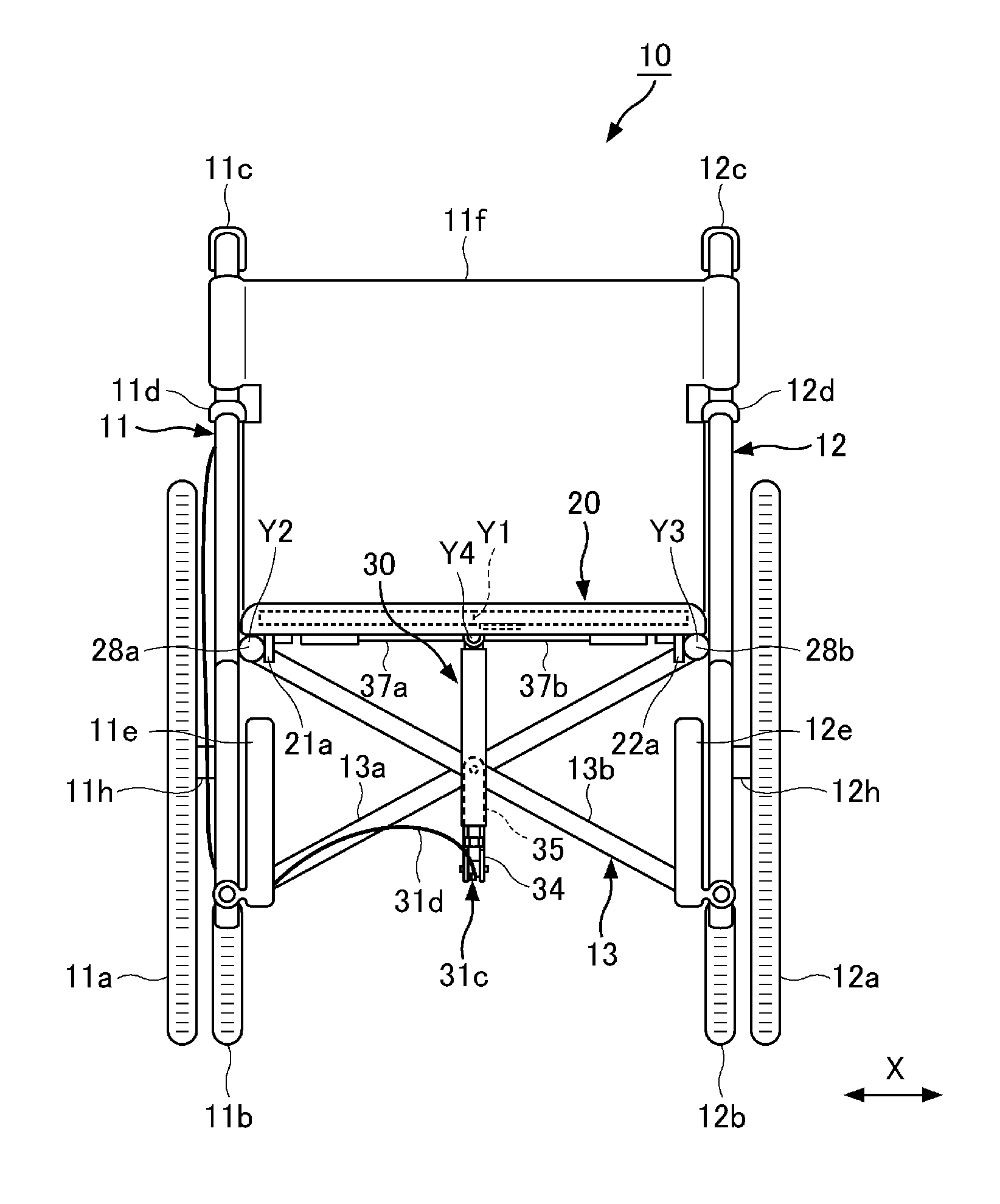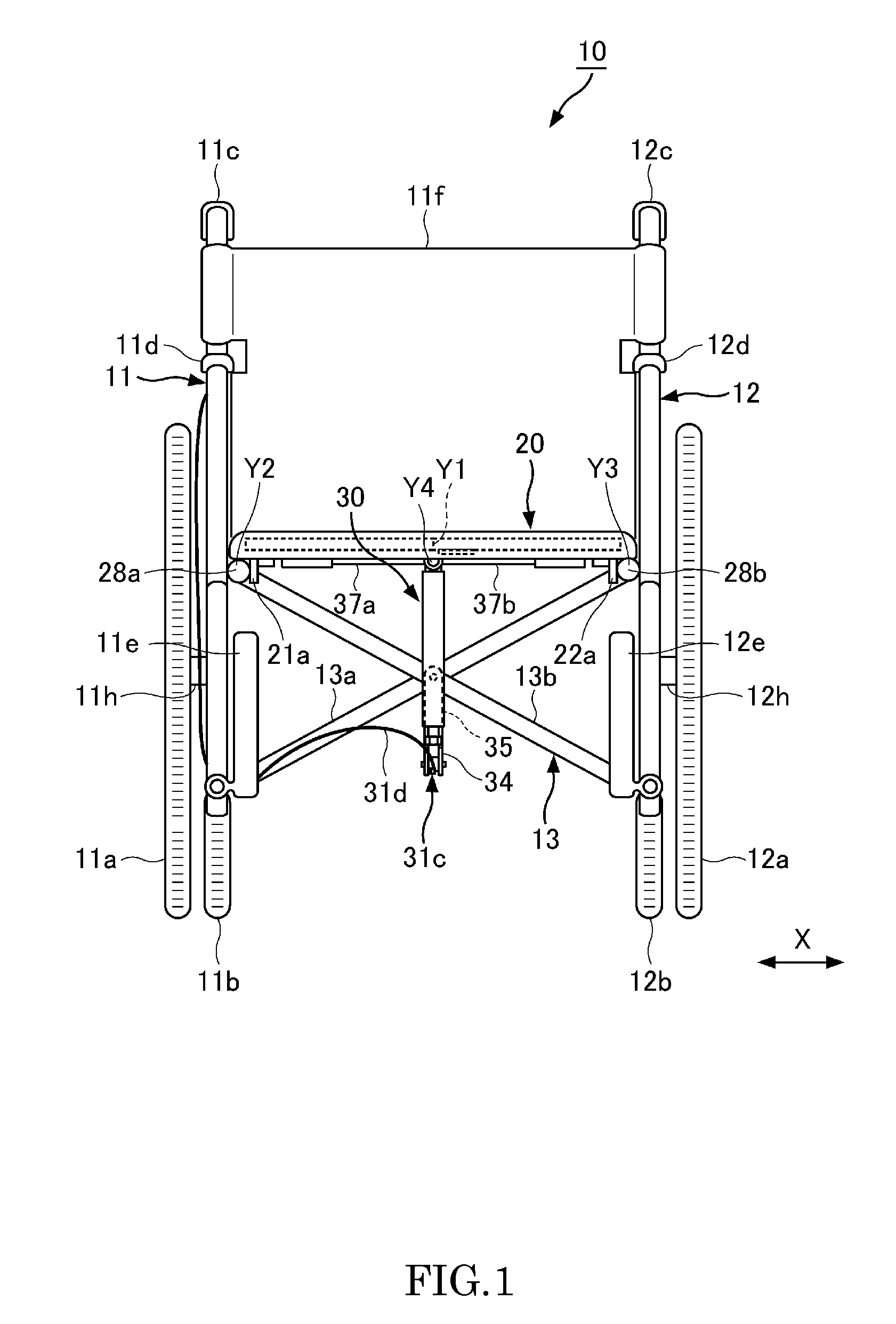Folding wheel chair and stand-assist seat
a technology of stand-assist chair and seat, which is applied in the field of folding wheel chairs, can solve the problems of difficult application of stand-assist chair to folding wheel chairs, inability to achieve the purpose of reducing carer labor, and seat cannot be folded in the reverse-v state along the longitudinal center line, so as to achieve the effect of smooth folding action of seats
- Summary
- Abstract
- Description
- Claims
- Application Information
AI Technical Summary
Benefits of technology
Problems solved by technology
Method used
Image
Examples
Embodiment Construction
[0064]A preferred embodiment of the present invention is described in detail with reference to FIGS. 1 to 21.
[0065]It should be noted that, although technically preferable limitations are given in the embodiments described below because the embodiments are preferable specific examples of the invention, the scope of the invention is not limited to these embodiments unless otherwise noted.
[0066]FIG. 1 and FIG. 2 show the construction of an embodiment of a folding wheel chair according to the present invention in the seating state. Here, when two parts have bilateral symmetry, only one part is described.
[0067]In FIG. 1 and FIG. 2, the folding wheel chair consists of a pair of side frames 11 and 12, cross links 13 which connect the pair of side frames 11 and 12 traverse (in x-direction), seat 20 which connects the upper portions of cross links 13 and spring member 30 (compression spring) which is biasing seat 20 upward.
[0068]Side frames 11 and 12 are constructed bilateral symmetry to ea...
PUM
 Login to View More
Login to View More Abstract
Description
Claims
Application Information
 Login to View More
Login to View More - R&D
- Intellectual Property
- Life Sciences
- Materials
- Tech Scout
- Unparalleled Data Quality
- Higher Quality Content
- 60% Fewer Hallucinations
Browse by: Latest US Patents, China's latest patents, Technical Efficacy Thesaurus, Application Domain, Technology Topic, Popular Technical Reports.
© 2025 PatSnap. All rights reserved.Legal|Privacy policy|Modern Slavery Act Transparency Statement|Sitemap|About US| Contact US: help@patsnap.com



